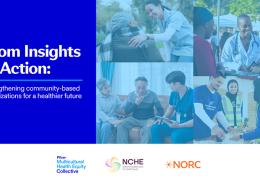For Education, Support, and Assistance, Patient Advocacy Groups Can Help

A medical diagnosis can raise countless questions and concerns. One way that patients can empower themselves with knowledge and surround themselves with support is by finding an advocacy group that focuses on that particular condition or disease and the challenges that may surround it.
“The work of patient advocacy groups is very important to provide education and support; sometimes these groups have social workers on staff that can provide that psychosocial support to people, and and advocate for improved care for patients. In addition to education on the condition and treatment options, organizations may also fund research, advocate for policy change, provide psychosocial support and give financial assistance to patients,” says Patti Jewell, Senior Director of Patient Advocacy at Pfizer.
Across the country, advocacy groups work day in and day out to understand and respond to the needs of people impacted by a whole array of conditions. “If you're looking for the experts in patient care and understanding patient needs, it's the patient advocacy organizations,” says Mike Zincone, Senior Director of Patient Advocacy at Pfizer. The challenge, however, is that not all patients know that these non-profit organizations exist. “It's not that there's a shortage of resources out there for patients; there's usually a shortage of awareness, especially early in a diagnosis where important decisions are made,” says Zincone.
While large advocacy groups that are specific to well-known medical conditions often have recognizable names, such as American Lung Association, American Cancer Society, and Arthritis Foundation, there are also many organizations that advocate for people with rare diseases, such as National Organization for Rare Disorders (NORD), National Hemophilia Foundation, Parent Project Muscular Dystrophy, and more.
Advocacy groups frequently work with experts and other organizations in healthcare and pharmaceuticals. Pfizer, for example, works with hundreds of advocacy organizations to glean insights on patients’ experiences with the condition or treatments, inform patients about clinical trials, discuss side effects and side effect management, and educate the healthcare community about tools that might be helpful to patients. Often, those conversations will reveal areas where information is lacking, and that leads to an opportunity to educate or support patients. “When you find that white space where nothing is being done, that's where you should come together early, often, and consistently,” says Zincone.
Zincone shares the example of the Covid-19 Vaccine Education and Equity Project, which is a collaboration consisting of more than 230 partner organizations, including Pfizer, that came together to encourage open dialogue through trusted community voices to address vaccine hesitancy, especially within diverse communities that have been most harmed on the front lines of the pandemic.
Zincone says the best way patients can learn about patient advocacy groups is to talk to their healthcare team about their own needs and concerns. A doctor, nurse, patient navigator, or other healthcare professional may be able to direct them to an organization that can help provide education, connect them to others with shared experiences, and offer information about the latest research and treatment options. “Patients need this information. They need to know this information exists, and they need to be able to go to credible resources,” says Zincone.
![]()





